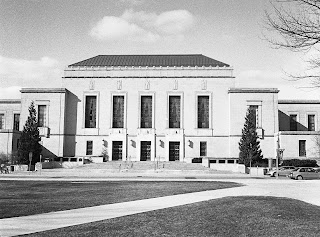Half-frame cameras use 35mm film, but the negatives are 18x24mm, rather than 24x36mm. Half-frame images are the same as the cine-film area. So, a roll of 24 exposure-film will give you 48 half-frame negatives. For cost-conscious photographers, half-frame is indeed a money-saver. If you had an Olympus Pen F SLR, you were carrying quite a good bit of photographic equipment. It also allowed for making some quite compact rangefinders and zone-focus cameras.
I recently obtained a Konica EYE, and the logo on the front looks like a text emoticon. The camera has a clean design, not unlike an Olympus Trip 35, and has some nice features.
- Dial on the back of the camera to set the ISO, with the setting appearing on the top deck
- Shutter speeds (auto-set) ranging from B (manual) to 1/30 to 1/800, with the 30mm lens having an aperture range of f/1.9 to f/16.
- Selenium cells around the lens control the metering - just like the Olympus Trip 35.
- Cold shoe with a PC-sync socket on the front of the camera
- Zone/scale focusing, no rangefinder
- ISO settings from 10 to 400.
The model I have is the EYE version 2, produced in 1964. I quickly figured out its quirks and loaded a roll of Eastman 5222 b&w film into it. You push a tiny button underneath the rewind arm to pop open the back. Very interesting feature.
I took the Eye out with me on Sunday -- it was a cold and windy day, but I managed to shoot nearly an entire roll before I called it quits. I could sense that the winding was having some problems -- as in perhaps tearing sprocket hols and overlapping frames. However, I persevered, and it went back to normally advancing the film. Other than that, the only thing I had to remind myself to do was to set the focus to the proper range.
I developed the film in D-76, in a 1:1 ratio with water for a 10 minute developing time. That usually works out well. Looking at the negs, some looked over-exposed, and of course, there were a bunch of overlapped frames, just as I suspected. Most of the images look pretty good, and I will try this camera once again with some different films. Since I roll my own cassettes, I will make them 30-frame rolls instead of 72!
Here are some of the images - all taken on the UM campus. Overall, I am pleased with the results, and maybe I'll try some TechPan another time for nearly grain-less images.
 |
| the overlapping frames! |











No comments:
Post a Comment